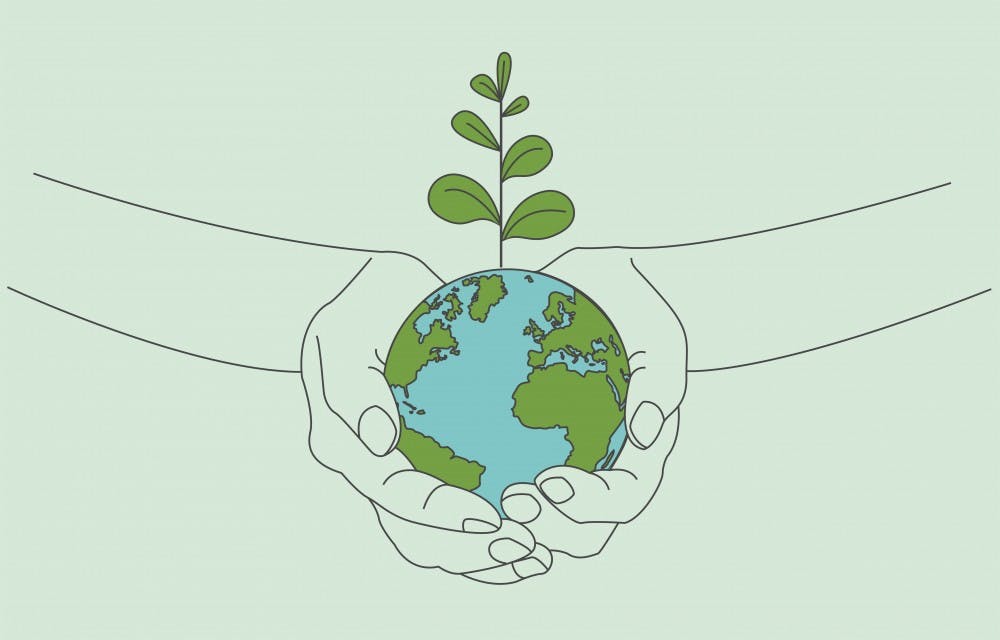History professor Michael Doyle spent the very first Earth Day, April 22, 1970, as a 17-year-old student showing his classmates at Winona Senior High School in Winona, Wisconsin, a film he made about the negative effects of air and water pollution.
Because of the success of the first Earth Day, air and water pollution in the United States has decreased greatly since the 1980s, according to the Environmental Protection Agency.
Earth Day began as a national teach-in April 22, 1970, Doyle said. Teach-ins were events held at universities during the '60s where students and professors would gather to learn about topics not taught in classes.
The teach-in idea and name came from Wisconsin Sen. Gaylord Nelson, an environmentalist who was upset with the oil spill in the Santa Barbara Channel in 1969 — the largest oil spill in history at that point in time.
“Gaylord Nelson looked at this and realized it wasn’t a problem that wasn’t going to go away and it needed the attention of political classes and younger people,” Doyle said.
Nelson asked Paul “Pete” McCloskey, a republican representative from California, to help him get the idea going.
Nelson and McCloskey felt they should put the youth “in the front seat” on this project, so they hired Harvard history graduate Dennis Hayes and put him in charge of the event planning, Doyle said.
Nelson, McCloskey and Hayes knew that a teach-in would be most appropriate because they would reach out to college students and inform them about the topic.
“The idea was, ‘Let’s educate the public, and then try to figure out the next part of this, which activists learned in the '60s,’” Doyle said. “There’s a time for talking about the problem, but that can only go so far.”
Hayes renamed the teach-in “Earth Day.” In order to get as many college students as possible to attend, he knew he had to pick a date in between spring break and finals week. So he picked April 22, a Wednesday, according to Earth Day Network.
Doyle said an estimated 20 million people participated in this demonstration, making it the largest of its time.
Doyle said this was so successful not just because of how many people participated, but also because of the effect the teach-in had on attendees. After the first Earth Day, people began acting on the grassroots level, organizing recycling centers and cleaning up trash, Doyle said.
The Earth Day teach-in influenced Nixon to sign the legislation to create the Environmental Protection Agency, and pass the Clean Water Act, the Clean Air Act and the Endangered Species Act, according to Earth Day Network.
Douglas Seefeldt, who will teach a history/natural resource and environmental science course in fall 2018, said the Earth Day teach-in taught students what environmentalists were just beginning to discover.
In 1962, environmentalist Rachel Carson wrote “Silent Spring,” a book about the result of her research on pesticides. It exposed the idea that pesticides were harming the environment, which caught the people’s attention, Seefeldt said.
In addition to Carson’s book, in 1968, NASA published Earthrise, a photo of the Earth from the moon taken by Apollo 8. Seefeldt said this photo caused people to realize that Earth is not limitless.
“This [photo] was kind of the trump card … this is the reality that we live on this planet and these resources have limits,” Seefeldt said.
Earth Day not only provided the opportunity for people to learn about what was only beginning to be discovered, but also promoted the beginning of a new environmental science, Seefeldt said.
“The environment was important enough to these people, students and faculty to interrupt their classes and hold the teach-in on this topic,” Seefeldt said.
Contact Hannah Gunnell with comments at hrgunnell@bsu.edu.





